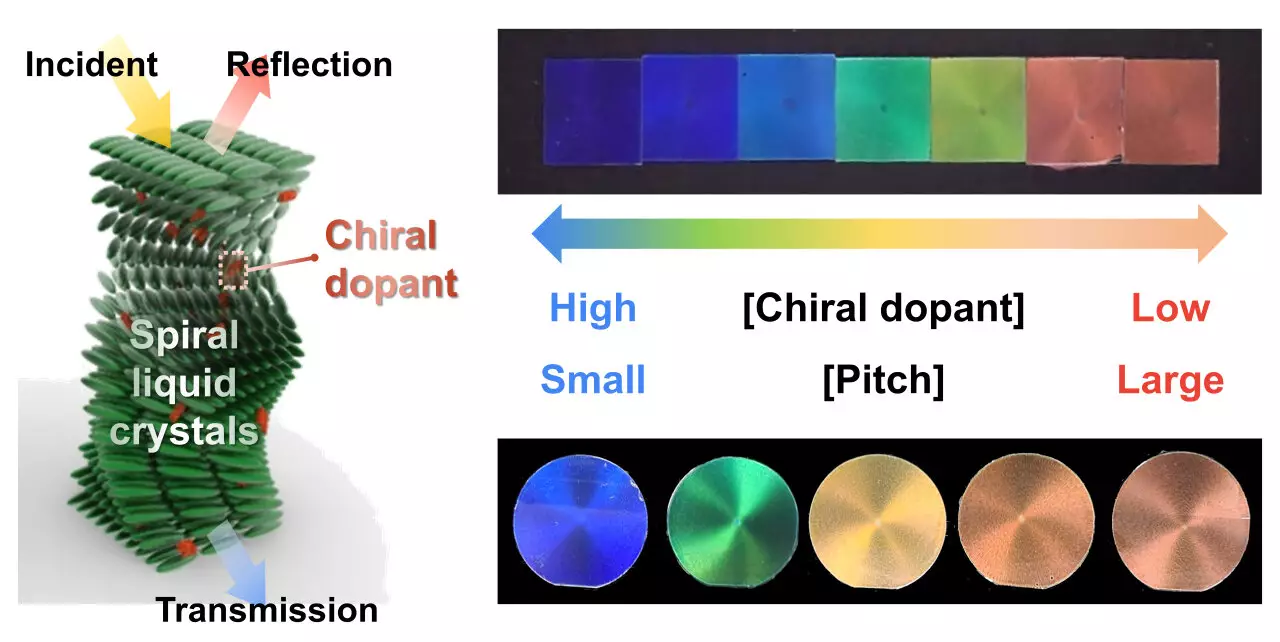In recent research conducted by Dr. Jin Gu Kang and his team at the Nanophotonics Research Center at the Korea Institute of Science and Technology (KIST), a groundbreaking colorful radiation-cooling liquid crystal material has been developed. This material has the unique ability to cool without the need for external power while also emitting color simultaneously. The study, published in the Chemical Engineering Journal, highlights the potential of this material in revolutionizing eco-friendly cooling technologies.
Radiative cooling, a technology that releases infrared radiation as heat through the atmospheric window to reduce temperatures, is gaining traction as a sustainable alternative to energy-intensive air conditioners. Traditionally, radiative cooling materials for daytime use have been colored white to minimize sunlight absorption. While effective in cooling, these materials lack aesthetics and are not suitable for use in buildings or vehicles. The development of colored radiative cooling materials that combine cooling performance with visual appeal has emerged as a novel approach to addressing this challenge.
Dr. Kang and his team addressed this issue by fabricating bent spiral liquid crystal photonic crystals. By using a commercial liquid crystal (LC242) that forms colored photonic crystals through its periodic structure when aligned into a spiral, the researchers were able to achieve vivid colors that are unlike conventional photonic crystals. This innovative approach not only enhances the cooling performance of the material but also allows for the realization of distinct colors that can be tailored to specific applications.
By combining the colored radiation-cooling liquid crystal material with transparent and metallic films, the research team achieved a significant reduction in temperature compared to conventional colored paint and ambient air. The material demonstrated a temperature decrease of approximately 30.8°C compared to the same colored commercial paint and 3.1°C lower than ambient air in the middle of the day. This advancement opens up possibilities for reducing air conditioning consumption in buildings and vehicles where aesthetics are a concern, as well as providing power-free cooling solutions for outdoor recreational items and military tents.
The development of colored radiation-cooling liquid crystal material represents a significant step forward in the pursuit of sustainable cooling technologies. The material’s ability to cool without external power while emitting vibrant colors opens up a wide range of possibilities for applications in various industries. With its simple and cost-effective fabrication process, this innovative material has the potential to revolutionize the way we approach cooling and energy efficiency. Dr. Jin Gu Kang and his team’s research paves the way for a greener and more sustainable future in the field of cooling technology.


Leave a Reply